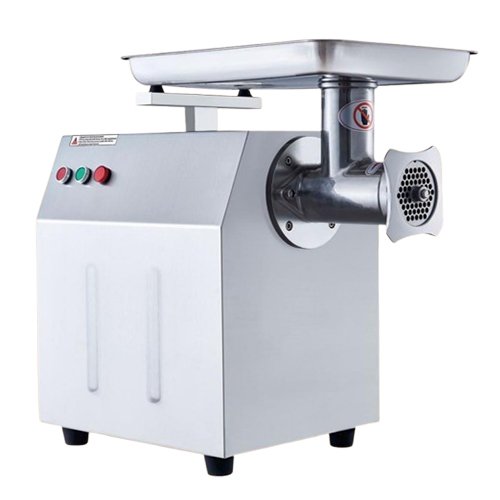
When it comes to high-volume food production, having the right equipment can make all the difference. For businesses in the food industry, a commercial meat grinder is an essential tool that streamlines operations, saves time, and ensures consistent results. If you’re using or considering a meat grinder with a capacity of 350kg/h, this blog post will provide valuable insights into optimizing its use and maintaining its performance.
Key Features of a Commercial Meat Grinder
A commercial meat grinder designed for processing 350kg of meat per hour is a powerhouse for restaurants, butcher shops, and food processing facilities. Here are some of its standout features:
- High Capacity: With the ability to process up to 350 kilograms of meat per hour, this grinder is ideal for large-scale operations.
- Durable Build: Made from heavy-duty materials, these grinders are built to withstand continuous use and demanding environments.
- Consistent Output: The grinder ensures uniform texture and size, which is crucial for producing high-quality meat products like sausages, patties, and minced meat.
- Ease of Use: Many models are designed with user-friendly controls, making them accessible even for operators with minimal training.
Benefits of Using a Meat Grinder in Your Business
- Improved Productivity: The high processing capacity allows you to meet customer demands without delay, especially during peak business hours.
- Cost Efficiency: Grinding meat in-house reduces reliance on pre-ground products and gives you control over quality and cost.
- Customization: A meat grinder lets you experiment with different blends, textures, and recipes to create unique offerings that set your business apart.
- Hygiene Control: By processing meat on-site, you can ensure strict adherence to hygiene standards, boosting customer confidence in your products.
Tips for Optimal Use
To get the most out of your commercial meat grinder, follow these best practices:
- Prep Your Meat: Before grinding, ensure the meat is properly chilled to maintain its texture and prevent clogging in the grinder.
- Clean Regularly: After each use, disassemble the grinder and clean all components thoroughly to prevent contamination and extend its lifespan.
- Inspect Blades and Plates: Check the cutting blades and grinding plates regularly for wear and replace them as needed to maintain efficiency.
- Train Your Staff: Provide adequate training to operators so they can use the machine safely and effectively.
Maintenance Tips
Proper maintenance is key to ensuring the longevity of your meat grinder:
- Lubricate moving parts as recommended by the manufacturer to reduce wear and tear.
- Store the grinder in a clean, dry area when not in use to prevent rust or corrosion.
- Schedule routine inspections to identify potential issues before they escalate into costly repairs.
Conclusion
A commercial meat grinder with a capacity of 350kg/h is an invaluable asset for any food business aiming to enhance efficiency and product quality. By understanding its features, benefits, and proper maintenance practices, users can maximize their investment and deliver exceptional results consistently. Whether you’re grinding meat for sausages, burgers, or other products, this powerful tool will help your business thrive in a competitive market.

